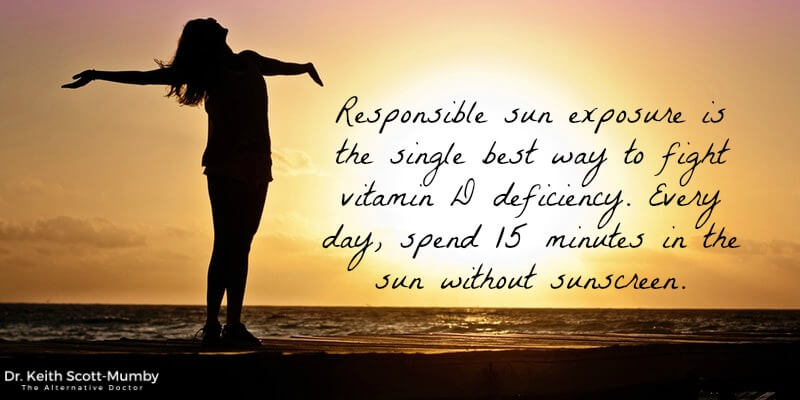Iron and vitamin D deficiency are common in many developed nations but are preventable and reversible with the right lifestyle and eating choices.
Every cell in your body uses iron to create the protein hemoglobin, which transports oxygen through your blood stream. When you don’t have enough hemoglobin, you’re at high risk of developing iron deficiency anemia. Iron is the key to storage and use of oxygen in your muscles.
The World Health Organization (WHO) states that iron deficiency is the most common nutritional disorder in the world. More than 2 billion people (30% of the world population) are anemic. It affects developed nations as well as less developed countries.
Risk Factors for Iron Deficiency
- Women still experiencing regular menstruation
- Women who are pregnant
- Premature infants or babies of low birth weight
- Vegetarians
- Those who donate blood frequently
- Patients recovering from extreme blood loss
- Consuming a poor diet
- Medical inability to absorb iron
Experts consider iron deficiency to be a public health condition of epidemic proportions.
Signs you may be iron deficient…
- Foggy or “wooly” brain
- Shortness of breath
- Pale skin
- Brittle nails
- Cold extremities (hands or feet)
- Chest pain
- Unexplained muscle pain
- Low physical endurance
- Fatigue despite rest
- Changes in mood or listlessness
- Higher incidence of infection or illness
Vitamin D deficiency (also called hypovitaminosis D) is another growing problem, specifically developed nations.

Risk Factors for Vitamin D Deficiency
- Individuals with darker skin tones
- Elderly people (our bodies use it less efficiently as we age)
- People who are overweight or obese
- Those who maintain a poor diet
- Living in colder climates or areas that experience more darkness annually
- Spending most of your time indoors
- Always using sunscreen
- Those with Crohn’s or celiac (and don’t consume much fat)
- Taking specific pharmaceuticals that affect vitamin D metabolism (cholesterol, anti-seizure, antifungals, HIV/AIDS)
A 2010 study published in Nutrition Journal from the National Health and Nutrition Examination Survey found that approximately 42% of American adults and 12% of American children don’t have enough vitamin D in their systems. There are approximately 3 million cases of medically serious deficiency in this critical vitamin every year in the U.S.
This is particularly dangerous because your body uses vitamin D to absorb calcium, regulate calcium and phosphate levels, manage bone and cell growth, and lower inflammation.
The authors of the study explained, “Mounting evidence suggests that vitamin D deficiency could be linked to several chronic diseases, including cardiovascular disease and cancer. [It’s] linked to some of the important risk factors of leading causes of death in the United States, it is important that health professionals are aware of this connection and offer dietary and other intervention strategies.”
Signs you may be vitamin D deficient…
- Foggy or “wooly” brain
- Bone pain without a known cause
- Higher risk of bone fractures
- Weakness of muscles or bones
- Fatigue despite rest
- Changes in mood that may include anxiety or depression
- Increased incidence of infection or illness
The most common causes of both iron and vitamin D deficiencies is not getting enough of them in your diet (and lifestyle) or taking medications that interfere with absorption.
If you don’t have a medically diagnosed condition that means your body either cannot absorb these nutrients or cannot utilize them properly, then deficiencies are easily correctible for most people. Iron is best absorbed through the food you eat.
Given the right compounds, your body will know exactly what to do with them!
Boost Your Iron and Vitamin D Naturally
- Fatty fish (mackerel, wild-caught salmon, tuna)
- Beef, chicken, turkey, and pork (organic varieties offer more nutrition)
- Cheese (from grass-fed cows)
- Beans (kidney, navy, black, pintos, lentils)
- Eggs (including the yolk)
- Pumpkin seeds
- Quinoa
- Fish oils
- Mushrooms
- Dark chocolate
- Leafy greens (kale, spinach, broccoli)
- Milk, yogurt, and orange juice are often fortified with vitamin D
Sunshine is Bursting with Vitamin D
Responsible sun exposure (never, ever burn your skin) is the single best way to fight vitamin D deficiency. Every day, spend 15 minutes in the sun without sunscreen.
Once you get your daily requirement, consider using a natural sunscreen that protects you but doesn’t make you sensitive to sunlight (this actually happens with chemical sunscreens).
When you coat your skin in sunscreen every single time you’re outside, you block your body’s ability to manufacture enough vitamin D.
If you have darkly pigmented skin, have breast-fed for a long time, live in a cold or very rainy location, or are obese, your body is going to have trouble producing enough vitamin D even with sunlight.
Always try diet and sunlight first – your body knows exactly how to process these natural sources. However, if you think you might be at risk for iron or vitamin D deficiency, you must supplement.
If you know you’re not getting enough through diet or lifestyle – don’t ignore it!
The post Natural Ways to Prevent Iron and Vitamin D Deficiency appeared first on Alternative Doctor Dev Site.
